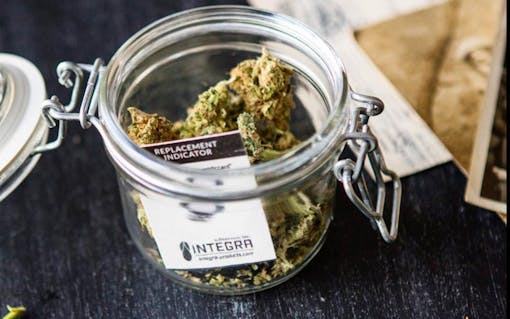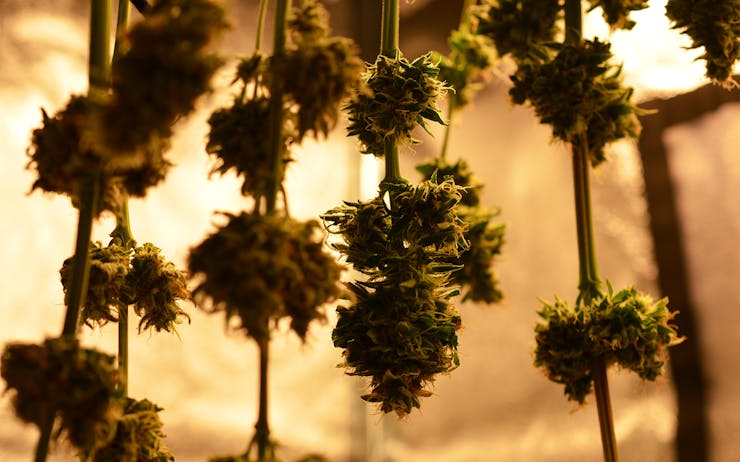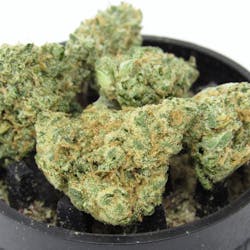This article is sponsored by Integra by Desiccare. Integra™ by Desiccare manufactures a complete line of humidity control products for the cannabis industry. Whether you’re drying, curing, storing, or preserving edibles, they have the solution to keep the freshness, potency, taste, and overall quality of your product.
If your only experience with cannabis has been purchasing it from a store, you might not realize how much care goes into its production. From selecting genetics and creating an ideal grow space through feeding and harvest, countless hours are invested in creating a quality product. Beyond that, two critical steps can make or break a harvest: curing and storage.
In general, the largest factor impacting curing and storage of cannabis is humidity. Humidity is often measured using the term “relative humidity” (RH% for short), which represents how much moisture is in the air surrounding the product. So how do skilled cultivators go about controlling humidity in these two critical steps, and why is it so important?
How Humidity Affects Cannabis During the Curing Process

For those unfamiliar with the process of growing cannabis, curing refers to the delicate process by which cannabis buds are slowly dried to remove moisture while retaining important compounds like terpenes and cannabinoids.
While curing cannabis, maintaining an appropriate RH percentage is required. If the RH% is too high, it will cause the cannabis to mold and become unsafe for consumption. On the other hand, if the RH% is too low, the cannabis will dry too quickly which makes for a harsh and unenjoyable product.
But if the RH% is just right, the product will thrive in the following ways:
THC Production
Once cannabis is harvested, chemical changes can still take place that will change the chemical composition of the final product. For example, a compound known as THCA will slowly convert to THC over time, due to physical processes. Slowly curing cannabis will allow more THCA to convert to THC (although heat exposure from a lighter or vaporizer will be where the bulk of the THCA gets converted to THC).
Chlorophyll Breakdown
Chlorophyll is essential to photosynthesis, the process by which cannabis converts light into energy. It’s also what gives plants their green pigment. Unfortunately, it’s also what gives improperly cured cannabis its harsh smoke. When curing cannabis, chlorophyll is broken down and released from the buds.
Terpene Preservation
Aromatic oils called terpenes are what give plants their specific aromas. While cannabis dries and cures, some terpenes will naturally break down. However, by drying and curing slowly and properly, terpenes can be better preserved to create a product that not only provides better flavor, but a more nuanced high as well.
Moisture Removal
When cannabis is curing, your product should already feel sufficiently dry. However, moisture still exists in stems and centers of the buds. By curing the buds properly, you allow this moisture to seep out slowly. This helps create the desired dryness, resulting in a quality product that can be stored for extended periods.
The curing process is what’s largely responsible for separating good cannabis from exceptional cannabis. Once the cannabis reaches its peak potential through a long healthy cure, it is then necessary to hold onto these qualities in storage. Again, humidity largely dictates how well the product will last. Stored cannabis can go from great to awful if you let humidity fluctuate. Too much humidity and the cannabis will remoisten and make for an unpleasant smoke. Worse yet, the buds may mold.
On the other hand, if you allow humidity to drop, the cannabis will become dry and brittle which causes trichomes to break off, buds to crumble, and the smoke to become harsh. Additionally, fluctuations in either direction will break down terpenes, causing the cannabis to lose its flavor. This is why it’s important to protect your cannabis in storage by maintaining an ideal RH%.
How to Ensure Safe Cannabis Humidity Levels

The best way to maintain a controlled RH% is to use a product that can do just that. In combination with an airtight container, humidity regulators such as Integra Boost packets ensure your product maintains a specific relative humidity. Integra’s Boost packets can either maintain a 62% RH or a 55% RH, depending on your preference and needs.
Both styles of humidity regulators are able to keep cannabis safe from mold during the curing process, while allowing the cure to bring out the full potential of the harvested buds. After curing, the packets can then ensure that the buds hold onto the qualities that create an enjoyable smell, flavor, and smoke. If cannabis is properly cured and stored, it can keep its quality for over a year depending on your climate and the strain.
It takes a lot of time and money to create a quality bud. However, after harvest, it is relatively inexpensive and requires few tools to ensure the cannabis is brought to its full potential. Investing in humidity regulators is just one easy way to put your mind at ease.






